This post contains affiliate links. Please read our disclosure policy.
Delicious, tender, juicy rump roast loaded with flavor from red wine and fresh herbs for a hearty meaty roast dinner everyone loves!
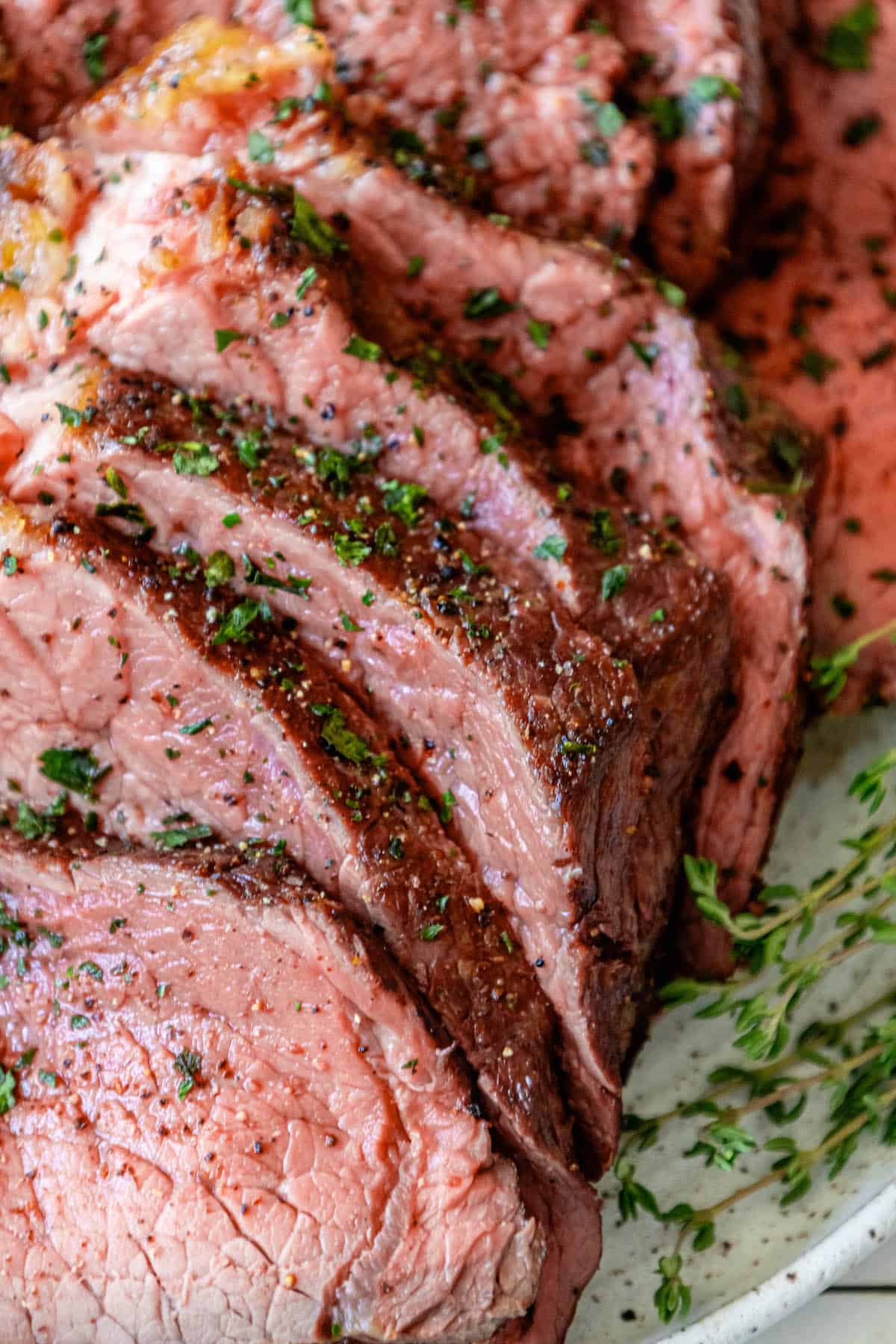
Don’t want all the extras in a recipe post? We provide a skip to recipe button in the top left corner, as well as a clickable table of contents, just below, to help make this page easier to navigate.
At Sweet C’s, I add lots of tips in all of my recipes – because I am a home cook without any formal training, and I find I am more confident making dishes when I understand why it works, and what each ingredient means to the flavor of a recipe. My goal is for even the most beginner home cook to feel empowered in the kitchen.
Table of contents
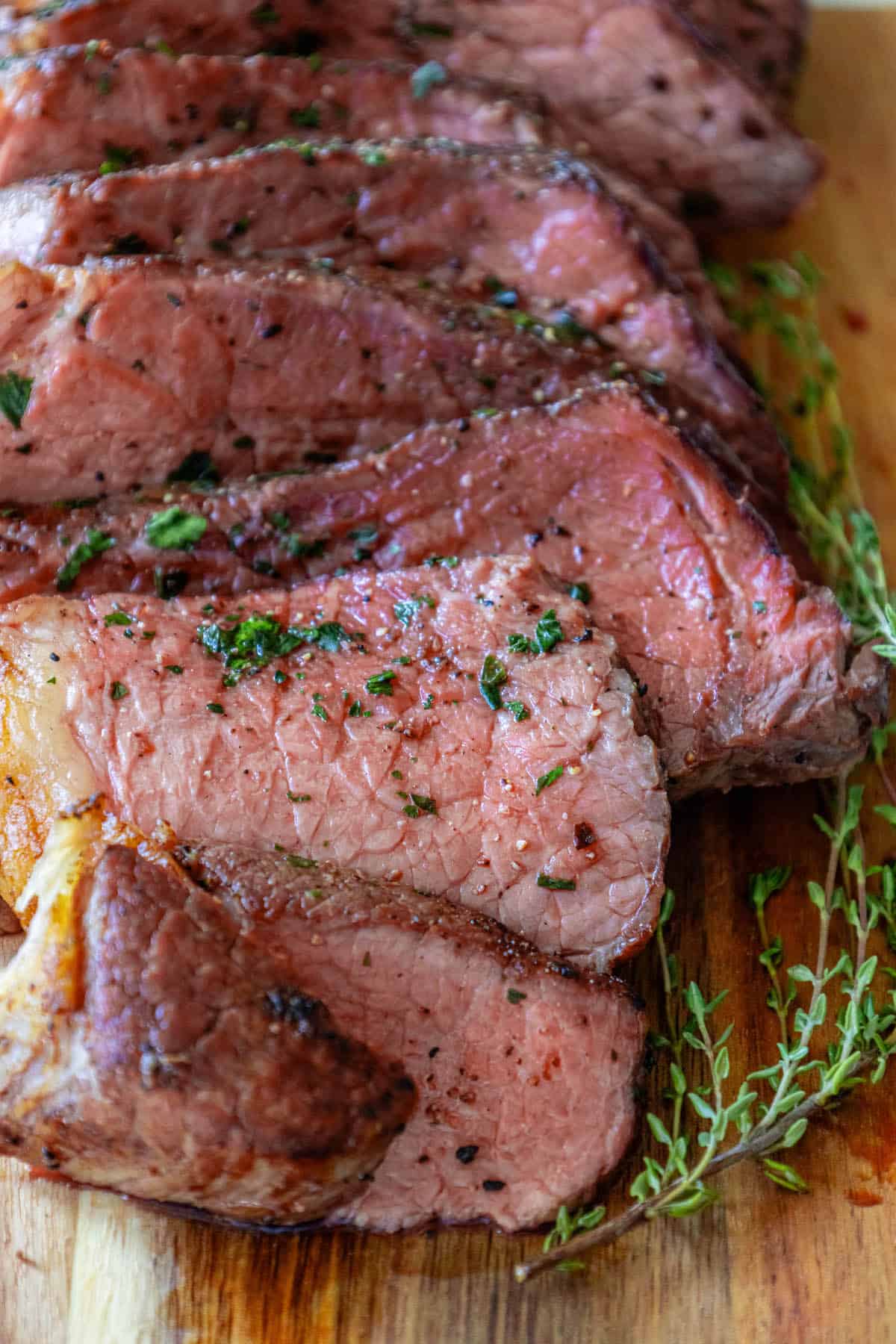
Easy Beef Rump Roast Recipe
Rump round roast, also known as bottom round roast, is a popular cut of beef known for its versatility and rich flavor. The name “rump round roast” comes from the location of the cut on the animal, which is the round portion of the hindquarters, specifically from the bottom or “rump” area. This cut is often referred to as “bottom round roast” due to its location near the bottom of the round primal cut, which includes several muscles, including the bottom round.
In terms of flavor, rump round roast offers a hearty and robust taste. It’s slightly leaner compared to some other cuts, which makes it a healthier option while still delivering a satisfying beefy flavor. When cooked properly, this roast can be tender and juicy, making it an excellent choice for pot roasts, braising, slow cooking, or even oven roasting.
To properly prepare a rump round roast, it’s important to consider its leanness. This cut can be less tender than some others, so slow cooking methods are often recommended to break down the connective tissues and render it tender.
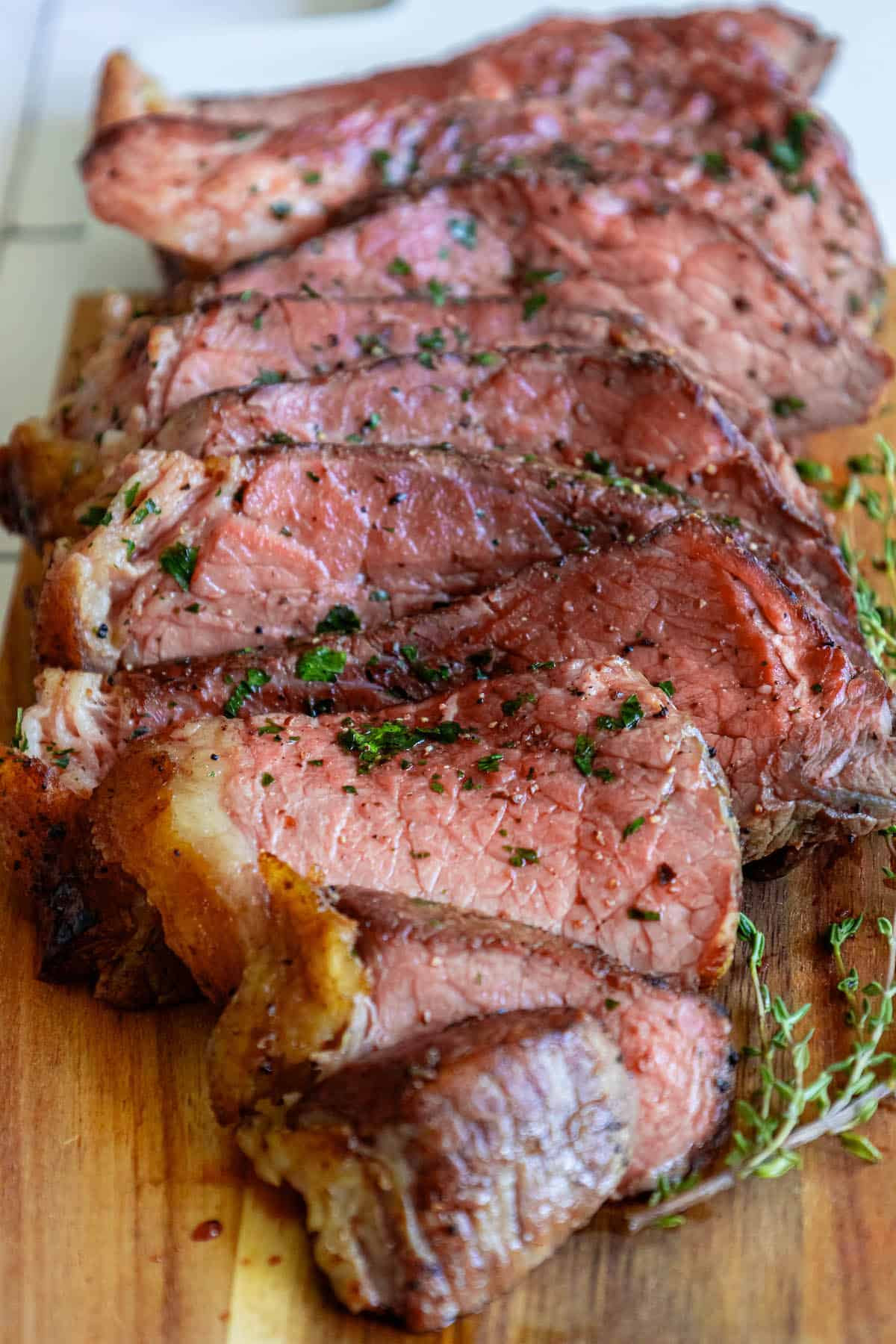
Beef Rump Roast Recipe Ingredients
To make this recipe, we will need the following ingredients:
- Rump Roast (3-4 pounds): The rump roast is the star of the dish, providing a hearty and flavorful beef foundation. It’s a lean cut of meat that becomes tender and succulent when properly cooked. Its natural beefy flavor is enhanced by the seasonings and cooking method.
- Olive Oil (2 tablespoons): Olive oil serves as the cooking fat for searing the roast. It helps create a beautiful crust on the meat, sealing in the juices and adding a mild, fruity flavor to the dish.
- Onion (chopped): Chopped onion contributes a savory and aromatic element to the recipe. As it cooks with the roast, it softens and infuses its sweet and slightly pungent flavor into the cooking liquid, enhancing the overall taste of the dish.
- Garlic (minced): Minced garlic provides a robust and pungent flavor that complements the beef. It adds depth and complexity to the dish, making it more flavorful.
- Carrots (chopped): Chopped carrots add a touch of natural sweetness and a pleasant earthy flavor to the dish. They also contribute to the overall aroma and appearance of the roast.
- Celery (chopped): Chopped celery brings a mild, herbal note and a slight crunch to the recipe. It’s a classic ingredient in many beef roast recipes and adds depth to the flavor profile.
- Beef Broth (1 cup): Beef broth is the liquid base of the dish, infusing the roast with savory and meaty flavors. It also helps keep the roast moist during the cooking process.
- Red Wine (optional, 1 cup): Red wine, if used, adds richness and complexity to the dish. It can impart fruity, earthy, and even slightly spicy notes, enhancing the overall flavor profile. The alcohol in the wine evaporates during cooking, leaving behind its flavor components.
- Bay Leaves: Bay leaves are aromatic herbs that contribute a subtle herbal note and aroma to the dish. They infuse the cooking liquid with their unique flavor.
- Dried Thyme and Rosemary (1 teaspoon each): Dried thyme and rosemary are herbs that bring earthy and slightly floral notes to the roast. They add depth and herbal complexity to the flavor.
- Salt and Black Pepper: Salt enhances all the flavors in the dish and helps bring out the natural taste of the beef. Black pepper adds a mild heat and pungency, balancing the overall flavor.




How to Make Beef Rump Roast
Once you’ve gathered your ingredients, we will use the following method:
- Preheat the Oven: Preheat your oven to 325°F (165°C).
- Season the Roast: Season the rump roast generously with salt and black pepper on all sides. You can also rub it with the dried thyme and rosemary for added flavor.
- Sear the Roast: In a large ovenproof skillet or Dutch oven, heat the olive oil over medium-high heat. When the oil is hot, add the rump roast and sear it on all sides until it’s well-browned. This step helps seal in the juices and adds flavor to the roast. Remove the roast from the skillet and set it aside.
- Sauté the Vegetables: In the same skillet, add the chopped onion, garlic, carrots, and celery. Sauté for about 5 minutes until the vegetables start to soften and the onions become translucent.
- Deglaze the Pan: If you’re using red wine, pour it into the skillet and stir, scraping up any browned bits from the bottom of the pan. Let it simmer for a few minutes to reduce slightly.
- Add the Roast Back: Place the seared rump roast back into the skillet on top of the sautéed vegetables.
- Pour in Broth: Add the beef broth to the skillet. It should come up about halfway to the side of the roast. If needed, you can add a bit more water or broth.
- Add Seasonings: Drop in the bay leaves, and season with additional salt and black pepper to taste.
- Cover and Roast: Cover the skillet or Dutch oven with a lid or aluminum foil. Place it in the preheated oven and roast for about 2.5 to 3 hours, or until the roast is fork-tender. You can check for doneness by using a meat thermometer; the internal temperature should reach 145°F (63°C) for medium-rare, or higher if you prefer your roast more well-done.
- Rest and Slice: Once done, remove the roast from the oven and let it rest for 10-15 minutes before slicing. This allows the juices to redistribute, keeping the meat moist and tender.
- Slice and Serve: Slice the rump roast against the grain into thin slices. Serve it with the vegetables and pan juices as a flavorful gravy.
- Enjoy: Serve your deliciously tender rump roast with your favorite side dishes, such as mashed potatoes, roasted vegetables, or a fresh salad.
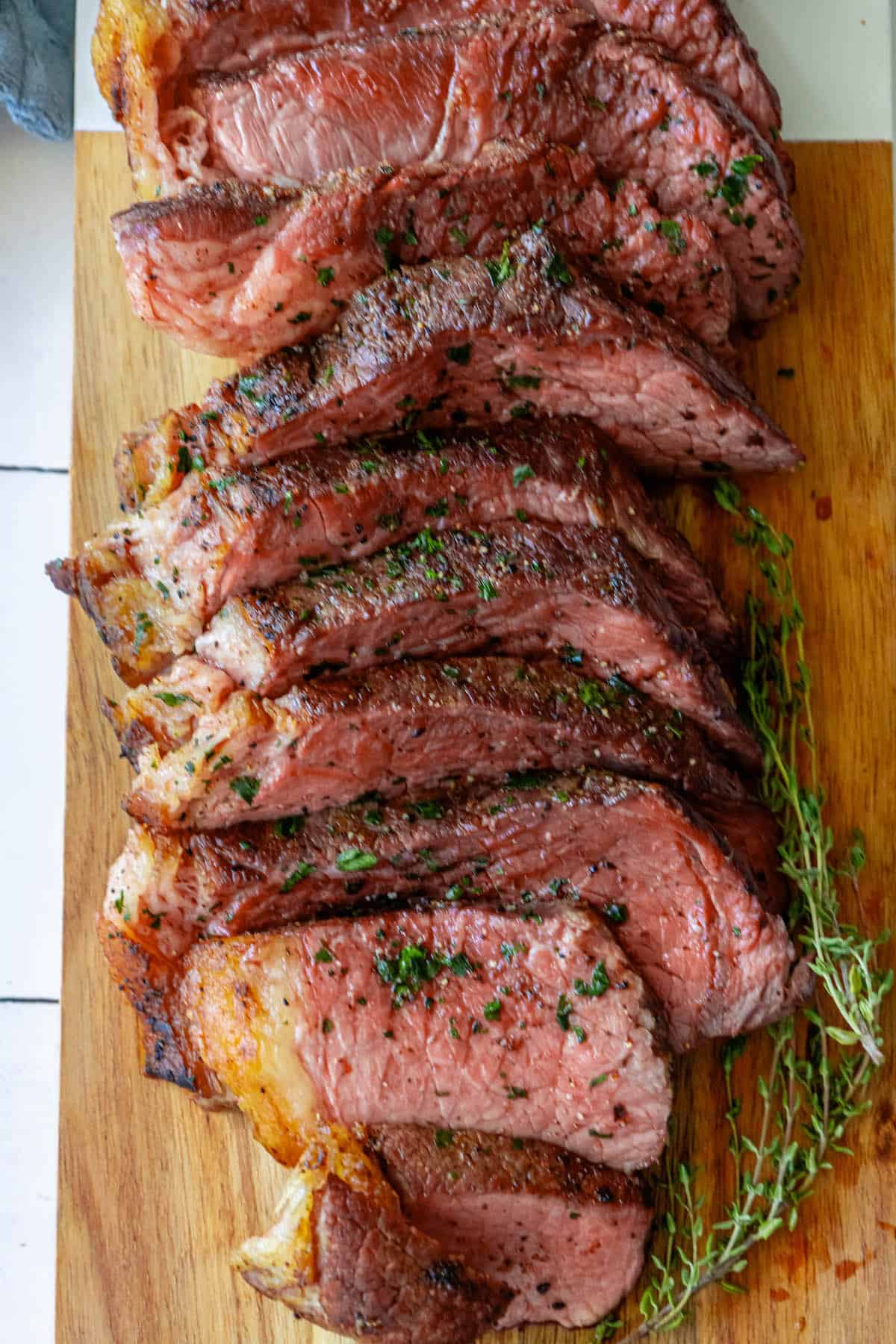
Beef Rump Roast Recipe Tips
Choose the Right Cut: Select a high-quality rump roast with good marbling. Look for one that is well-trimmed with a thin layer of fat on the outside, which adds flavor and moisture.
Bring It to Room Temperature: Allow the rump roast to sit at room temperature for about 30 minutes before cooking. This helps it cook more evenly.
Season Generously: Season the roast generously with salt, black pepper, and any desired herbs or spices. Pat the seasonings onto the meat’s surface for better adherence.
Sear for Flavor: Searing the roast in a hot skillet or Dutch oven before roasting or slow cooking is essential. Searing creates a flavorful crust, enhances the meat’s color, and locks in juices.
Use Aromatics: Sauté onions, garlic, carrots, and celery to create a flavorful base for your roast. These aromatics infuse the cooking liquid with rich flavors.
Deglaze the Pan: If you use red wine (optional), deglaze the pan after searing by adding the wine and scraping up any browned bits from the bottom. This adds depth to the gravy.
Choose Your Cooking Method: Consider slow cooking in the oven or a slow cooker. Low and slow methods help break down the connective tissues and result in a tender roast. You can also use a roasting pan.
Add Liquid: Use a combination of beef broth and wine for the cooking liquid. Ensure it comes up about halfway on the sides of the roast for a flavorful braising effect.
Use a Meat Thermometer: Invest in a meat thermometer to accurately monitor the internal temperature of the roast. For medium-rare, aim for an internal temperature of 145°F (63°C). Adjust for your desired level of doneness.
Cover While Cooking: Cover the roast with a lid or aluminum foil during the initial cooking phase to help retain moisture and create a tender texture.
Rest Before Slicing: After cooking, let the roast rest for about 10-15 minutes before slicing. This allows the juices to redistribute, keeping the meat moist.
Slice Against the Grain: When it’s time to slice the roast, always cut against the grain for maximum tenderness.
Serve with Gravy: Use the cooking liquid and aromatics to create a flavorful gravy. Strain and thicken the liquid if desired.
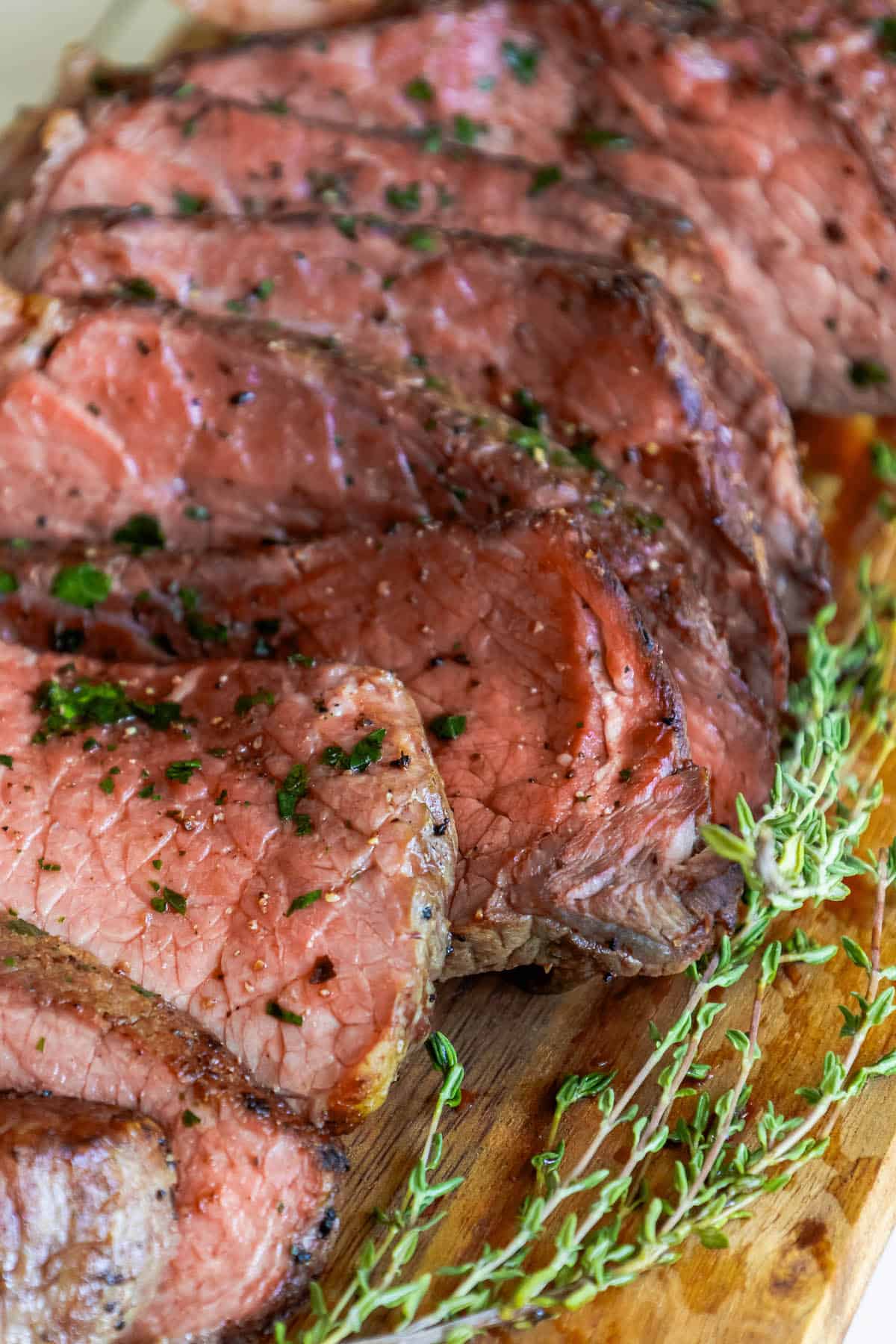
Perfect Beef Rump Roast FAQs
Season the rump roast generously with salt and black pepper as a base. You can also rub it with dried herbs like thyme and rosemary for added flavor. For additional depth, marinate the roast in the refrigerator for a few hours before cooking.
Yes, searing the rump roast before roasting or slow cooking is highly recommended. Searing creates a flavorful crust on the meat and enhances its color. It also helps lock in juices, resulting in a more succulent roast.
Yes, a slow cooker is an excellent choice for cooking rump roast. Cook it on the low setting for 6-8 hours, or until the roast is tender. The exact cooking time may vary based on the size of the roast and your slow cooker’s settings.
The ideal internal temperature for rump roast varies based on your preferred level of doneness. For medium-rare, aim for an internal temperature of around 145°F (63°C). Adjust the temperature to your desired doneness.
Yes, you can use beef stock instead of beef broth. Both will add depth of flavor to the dish. Beef stock tends to have a richer and more concentrated flavor, which can enhance the overall taste.
The red wine is optional and can be omitted if you prefer not to use alcohol. The roast will still be delicious with the beef broth alone. If you choose to use wine, it can add complexity and richness to the flavor.
Yes, you can prepare rump roast in advance and reheat it. Store the cooked roast in the refrigerator, and when you’re ready to serve, reheat it in a low-temperature oven or in simmering broth on the stovetop. Ensure it doesn’t overcook during the reheating process to maintain its tenderness.
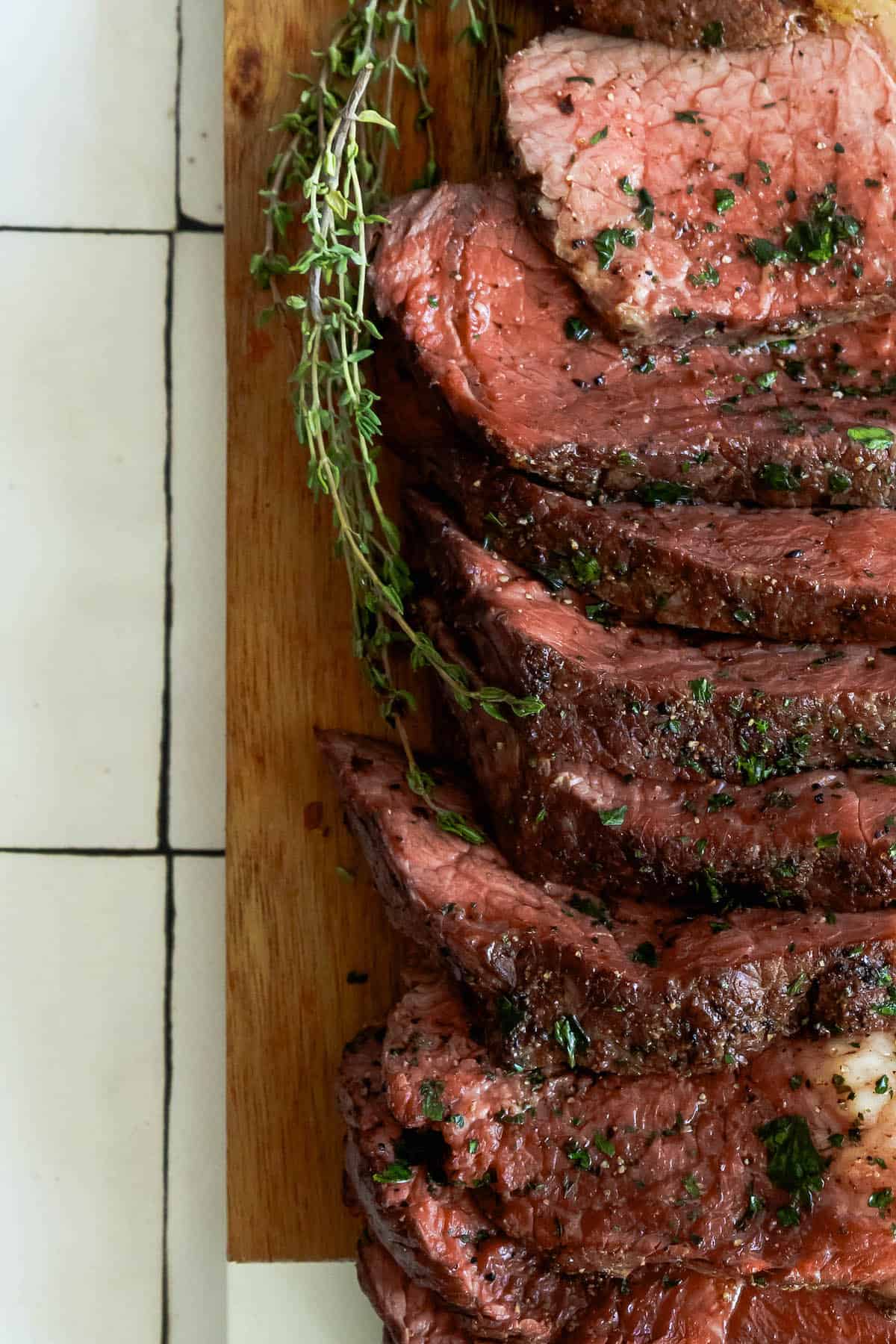
What to Serve With Easy Beef Rump Roast
Mashed Potatoes: Creamy mashed potatoes are a perfect complement to the savory flavors of rump roast. You can also make garlic mashed potatoes for an extra kick of flavor.
Roasted Vegetables: Roasted vegetables, such as carrots, potatoes, Brussels sprouts, or asparagus, add a wonderful balance of textures and flavors to your meal. The caramelization from roasting enhances their natural sweetness.
Yorkshire Pudding: A traditional Yorkshire pudding is a fantastic addition to a rump roast dinner. These savory, popover-like pastries are perfect for soaking up the delicious gravy.
Gravy: Speaking of gravy, a rich and flavorful gravy made from the roast’s cooking juices is a must-have. Drizzle it over the roast and side dishes for extra flavor.
Green Beans: Steamed or sautéed green beans offer a fresh and crunchy contrast to the roast’s richness. A simple garlic butter sauce can elevate their taste.
Cauliflower Mash: For a lower-carb alternative to mashed potatoes, try cauliflower mash. Season it with garlic and herbs for added flavor.
Crispy Roasted Potatoes: Crispy roasted potatoes, seasoned with herbs and spices, make a delightful side dish that complements the roast’s texture and flavor.
Creamed Spinach: Creamed spinach is a creamy and savory side that pairs well with the rich taste of the roast. It’s a classic steakhouse favorite.
Horseradish Sauce: A zesty horseradish sauce can provide a sharp and spicy contrast to the roast’s richness. It’s a traditional condiment for beef.
Homemade Bread or Rolls: Serve warm, homemade bread or dinner rolls with butter to round out the meal and mop up any remaining gravy.
Cranberry Sauce: A touch of cranberry sauce can add a sweet and tangy element to your plate, creating a nice balance with the roast.
Salad: A fresh and crisp salad with a vinaigrette dressing can provide a refreshing contrast to the hearty roast.
Coleslaw: Creamy coleslaw offers a cool and crunchy side that complements the roast’s flavors.
Rice or Quinoa: If you prefer grains, consider serving rice or quinoa alongside your rump roast. These grains can soak up the delicious juices and gravy.
Cornbread: Cornbread is a classic Southern side dish that adds a touch of sweetness and a bit of texture to the meal.
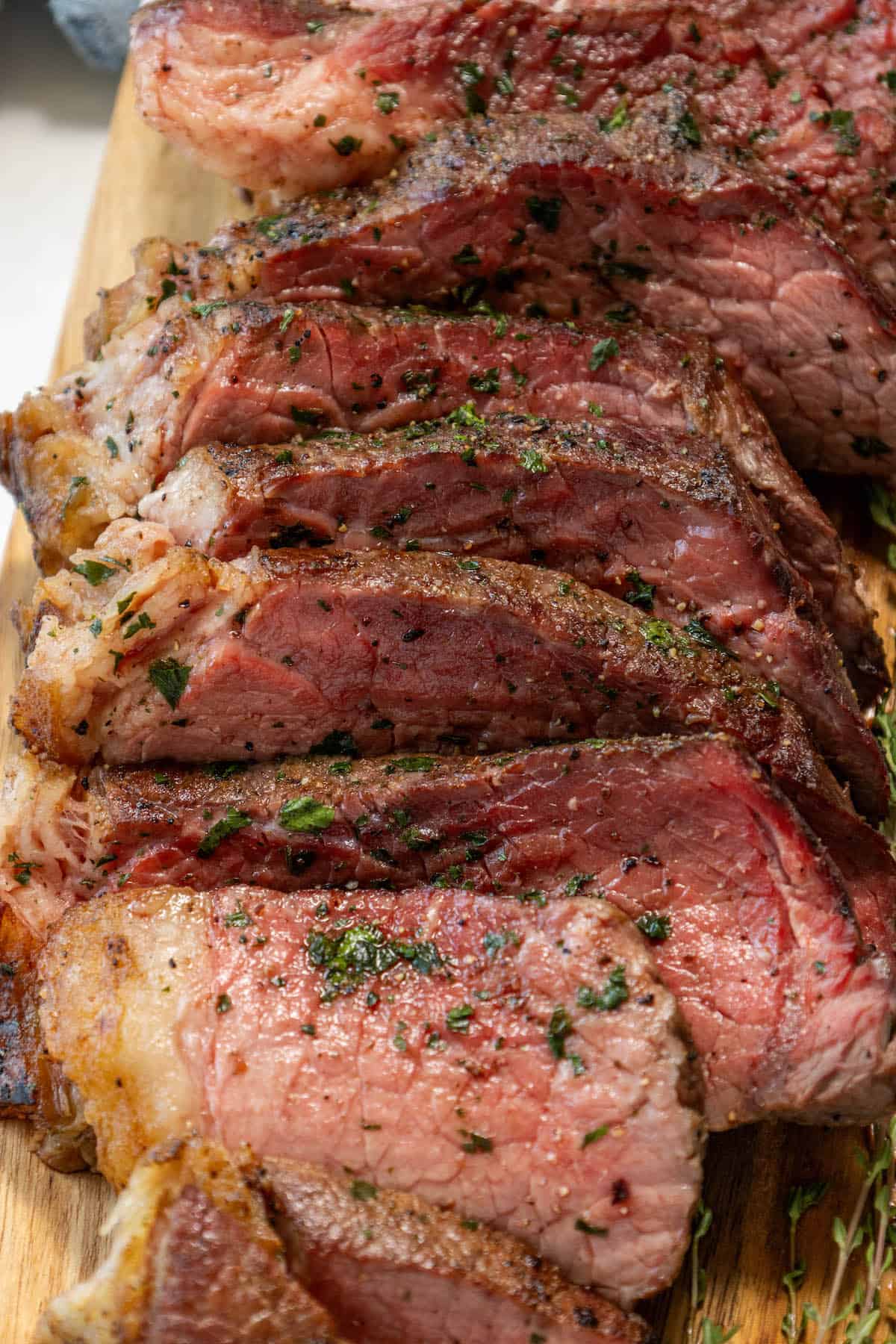
Perfect Rump Roast Recipe
If you love this easy recipe please click the stars below to give it a five star rating and leave a comment! Please also help me share on Instagram, Facebook, and Pinterest!
Share on Facebook
SharePin this now to find it later
Pin ItFollow on Instagram
Click here to view the web story for this recipe!
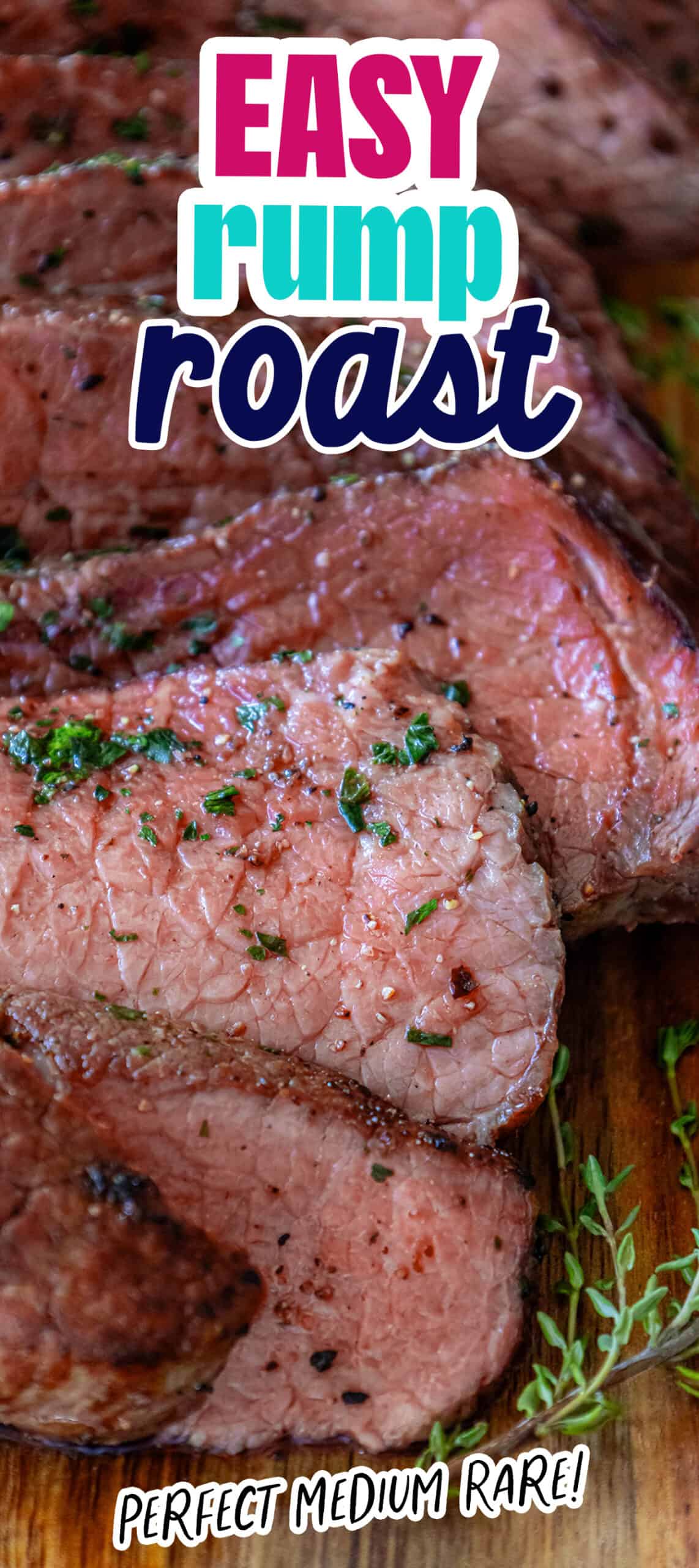
Only have 30 minutes to get dinner on the table? Sign up for my 30 minute dinner plans direct to your inbox!
Find and shop my favorite products in my Amazon storefront here!
Beef Rump Roast Recipe
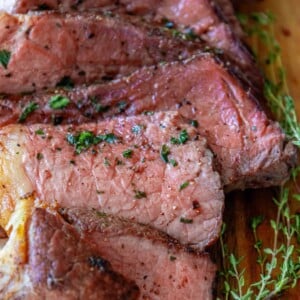
Equipment
Ingredients
- 1 rump roast, 3-4 pounds
- 2 tablespoons olive oil
- 1 onion, chopped
- 3 cloves garlic, minced
- 2 carrots, chopped
- 2 celery stalks, chopped
- 1 cup beef broth
- 1 cup red wine, optional
- 2 bay leaves
- 1 teaspoon dried thyme
- 1 teaspoon dried rosemary
- Salt and black pepper, to taste
Instructions
- Preheat your oven to 325°F (165°C).
- Season the rump roast generously with salt and black pepper on all sides. You can also rub it with the dried thyme and rosemary for added flavor.
- In a large ovenproof skillet or Dutch oven, heat the olive oil over medium-high heat. When the oil is hot, add the rump roast and sear it on all sides until it's well-browned. This step helps seal in the juices and adds flavor to the roast. Remove the roast from the skillet and set it aside.
- In the same skillet, add the chopped onion, garlic, carrots, and celery. Sauté for about 5 minutes until the vegetables start to soften and the onions become translucent.
- If you're using red wine, pour it into the skillet and stir, scraping up any browned bits from the bottom of the pan. Let it simmer for a few minutes to reduce slightly.
- Place the seared rump roast back into the skillet on top of the sautéed vegetables.
- Add the beef broth to the skillet. It should come up about halfway to the side of the roast. If needed, you can add a bit more water or broth.
- Drop in the bay leaves, and season with additional salt and black pepper to taste.
- Cover the skillet or Dutch oven with a lid or aluminum foil. Place it in the preheated oven and roast for about 2.5 to 3 hours, or until the roast is fork-tender. You can check for doneness by using a meat thermometer; the internal temperature should reach 145°F (63°C) for medium-rare, or higher if you prefer your roast more well-done.
- Once done, remove the roast from the oven and let it rest for 10-15 minutes before slicing. This allows the juices to redistribute, keeping the meat moist and tender.
- Slice the rump roast against the grain into thin slices. Serve it with the vegetables and pan juices as a flavorful gravy.
- Serve your deliciously tender rump roast with your favorite side dishes, such as mashed potatoes, roasted vegetables, or a fresh salad.
Nutrition
Nutrition information is automatically calculated, so should only be used as an approximation.
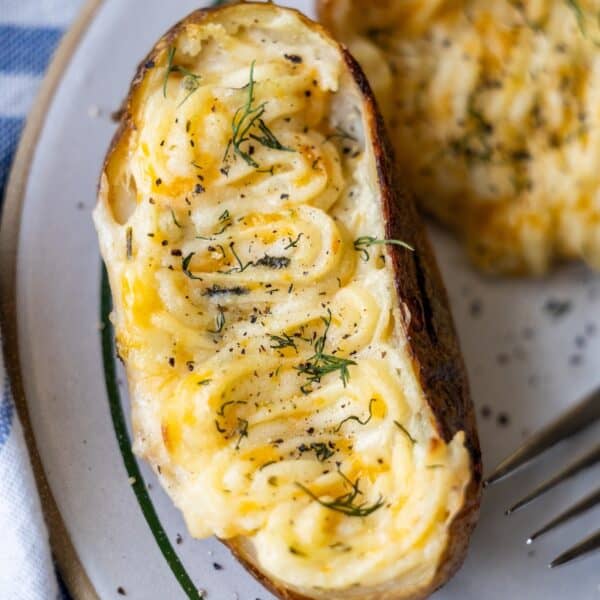
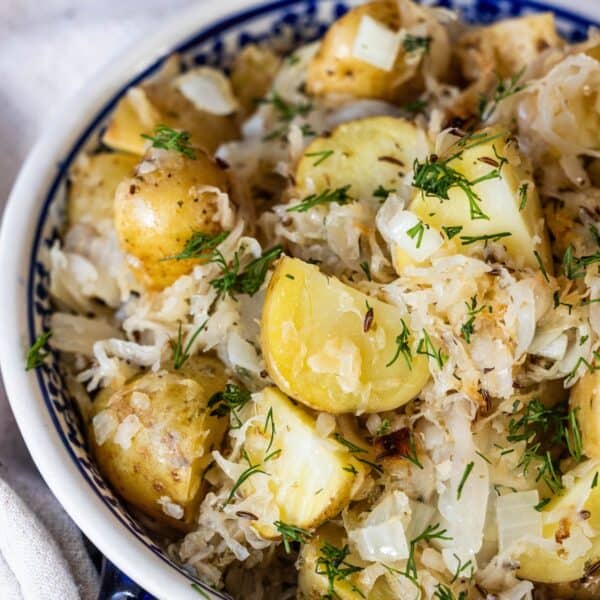
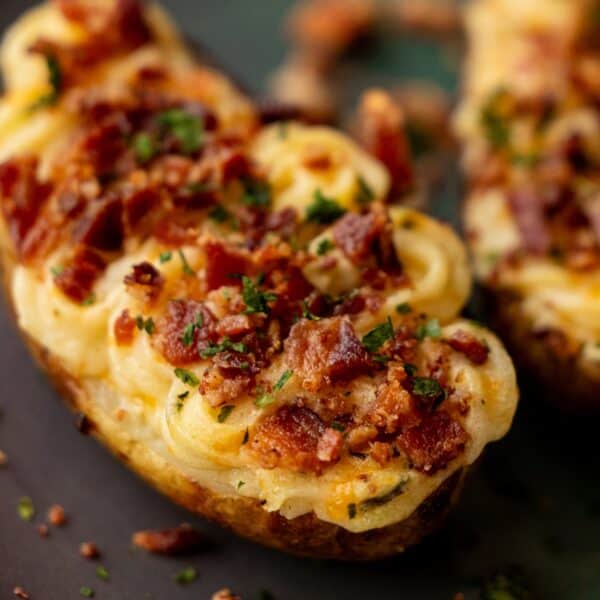
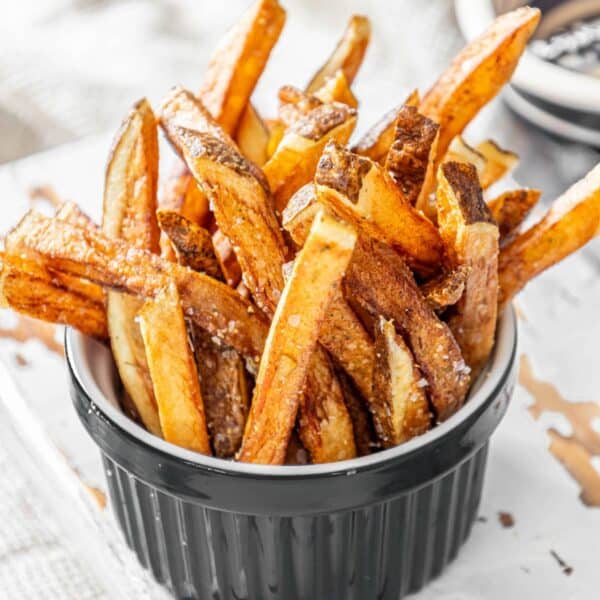
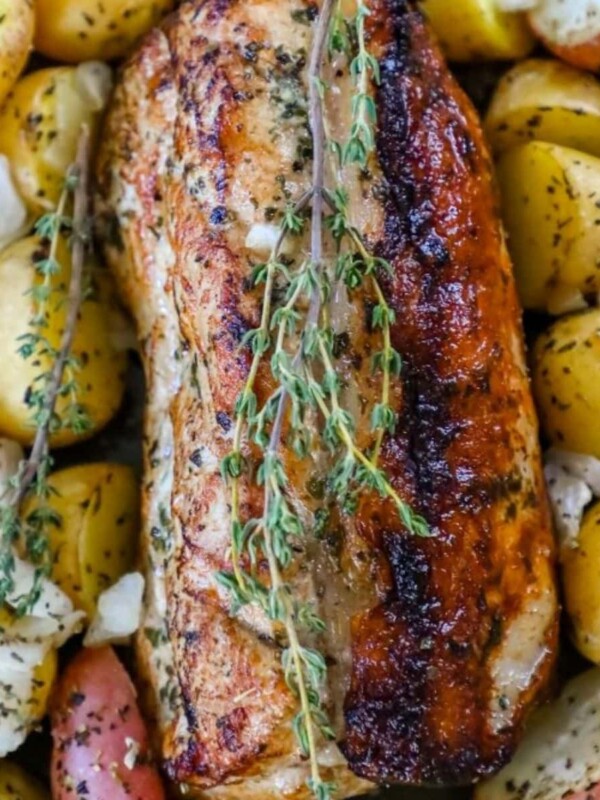
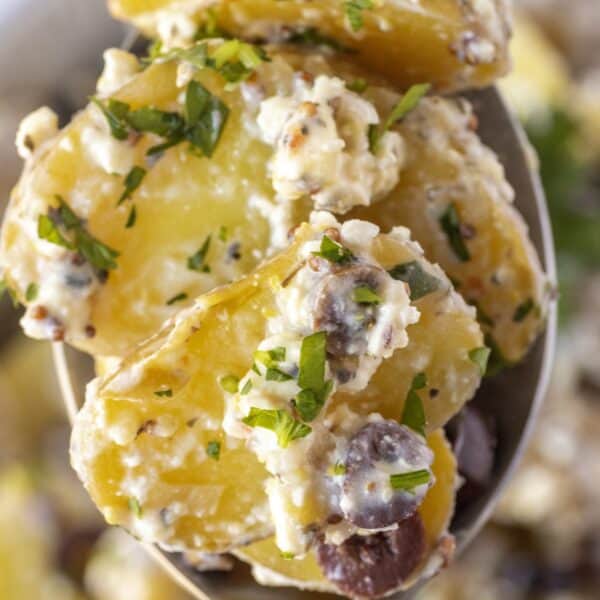
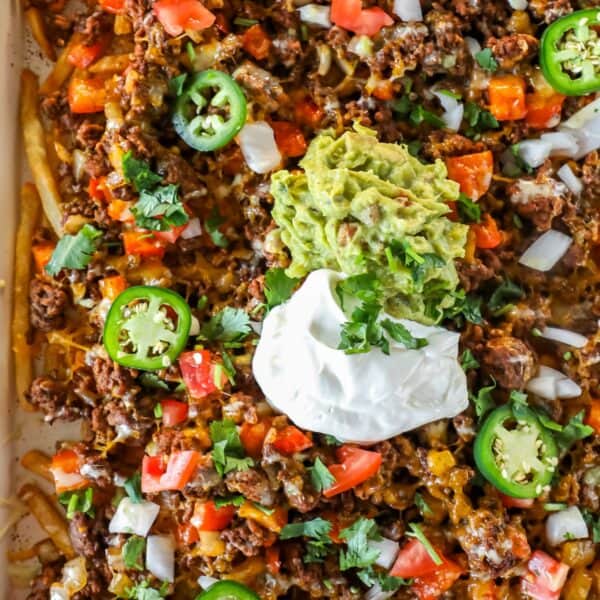
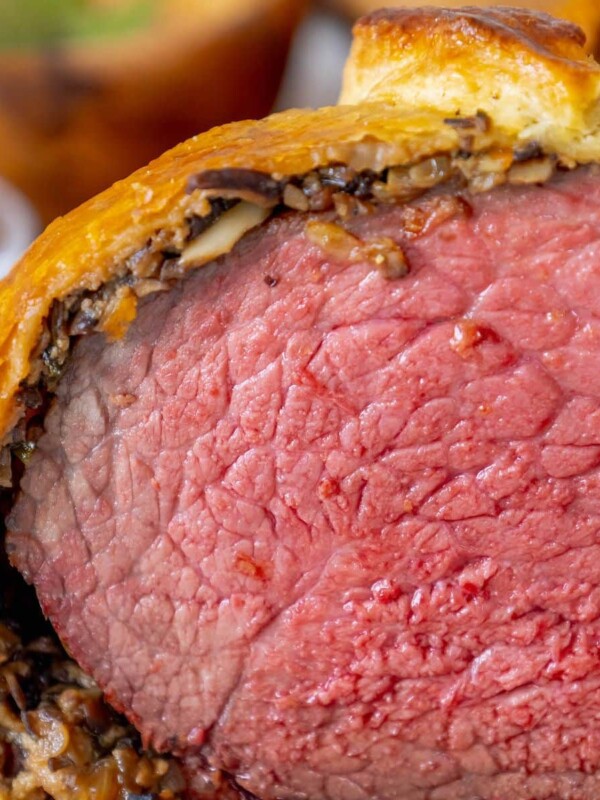
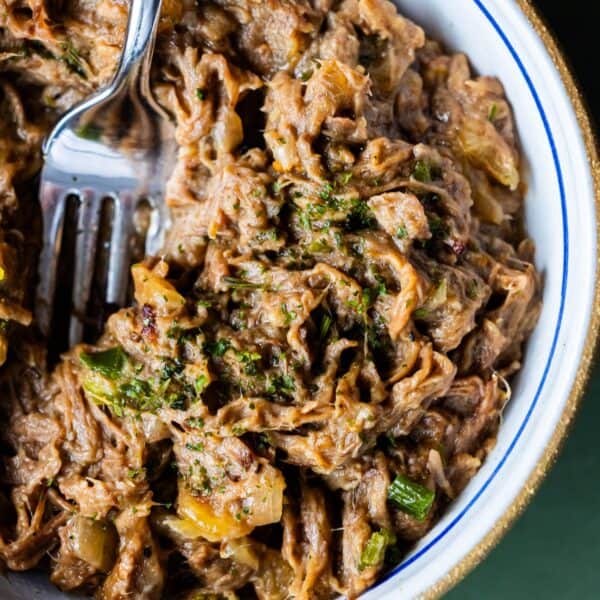
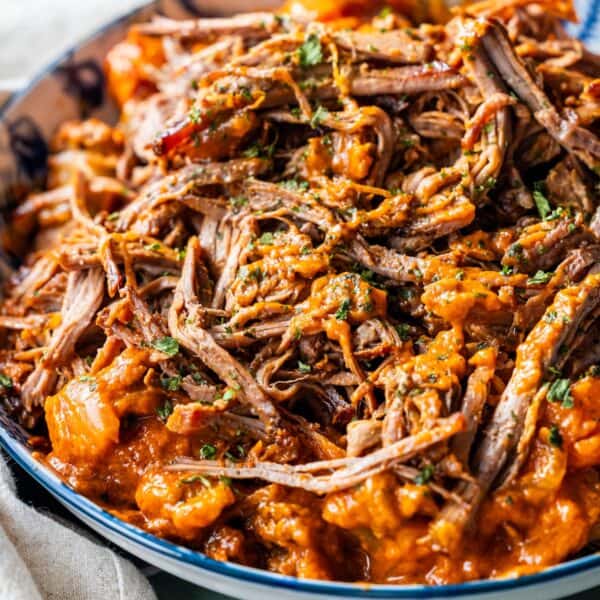






Isn’t 2.5 hours considered a long time for a 4 lb roast? I’m searching online and I keep seeing 20 min per lb at 325 degrees F. That would come to 80 minutes. Sorry if this is a dumb question, I’m not familiar with cooking roasts and seeing this conflicting info is confusing.
That depends on the temperature of the oven and if there is moisture. I bake mine at 325 degrees in broth and wine so it takes longer to get tender but it will not dry out and is well braised in the liquids. It will cook more quickly in a roasting pan directly exposed to the heat but it may not be very tender.
Can I cook in the crock pot instead of the oven?
Yes, follow the directions in the recipe but you would want to place the meat and mixture into the crock pot instead of the oven. Then cook on low for 8-10 hours or high for about 6 hours. It may need longer depending how big your roast is.